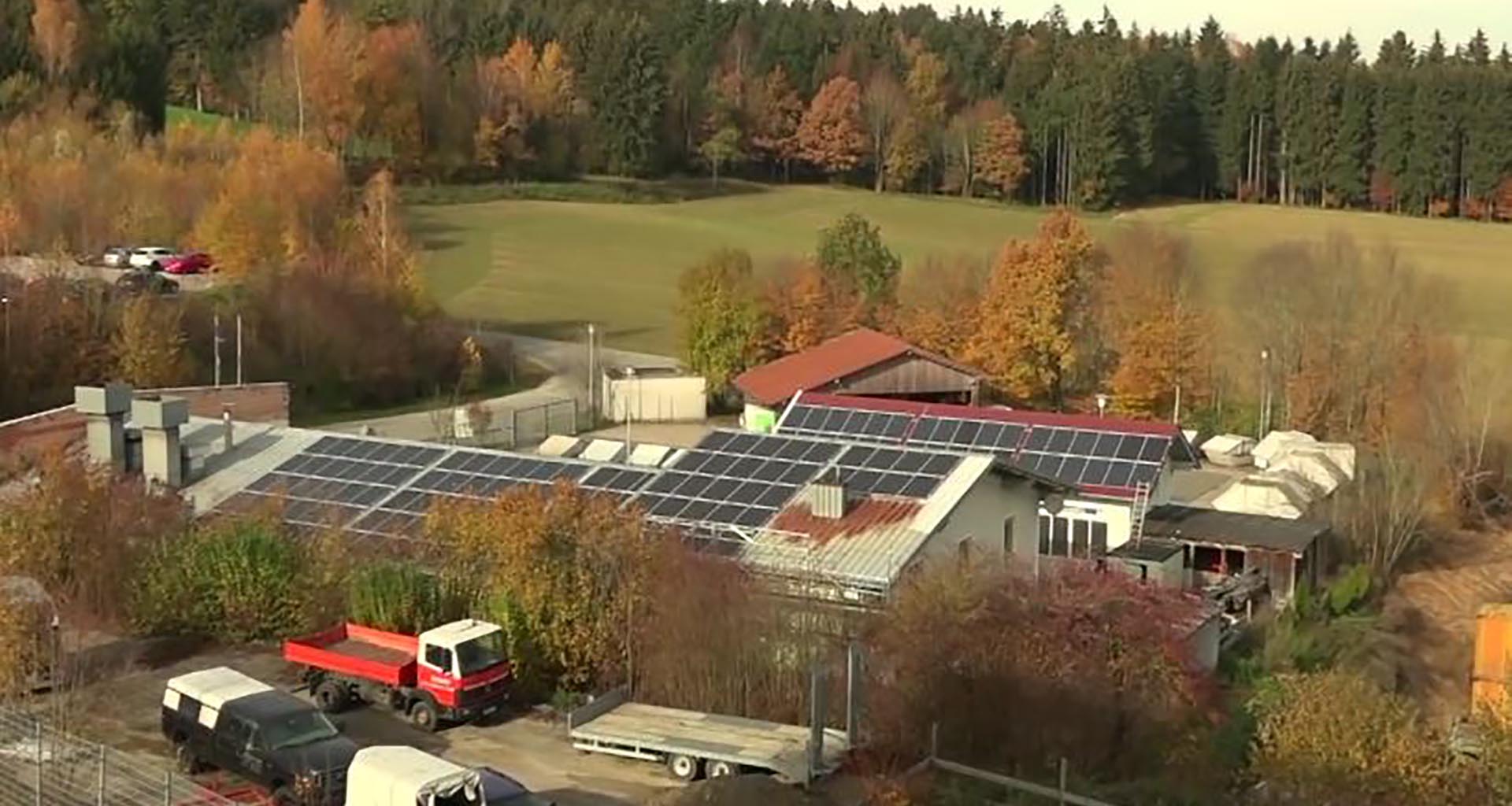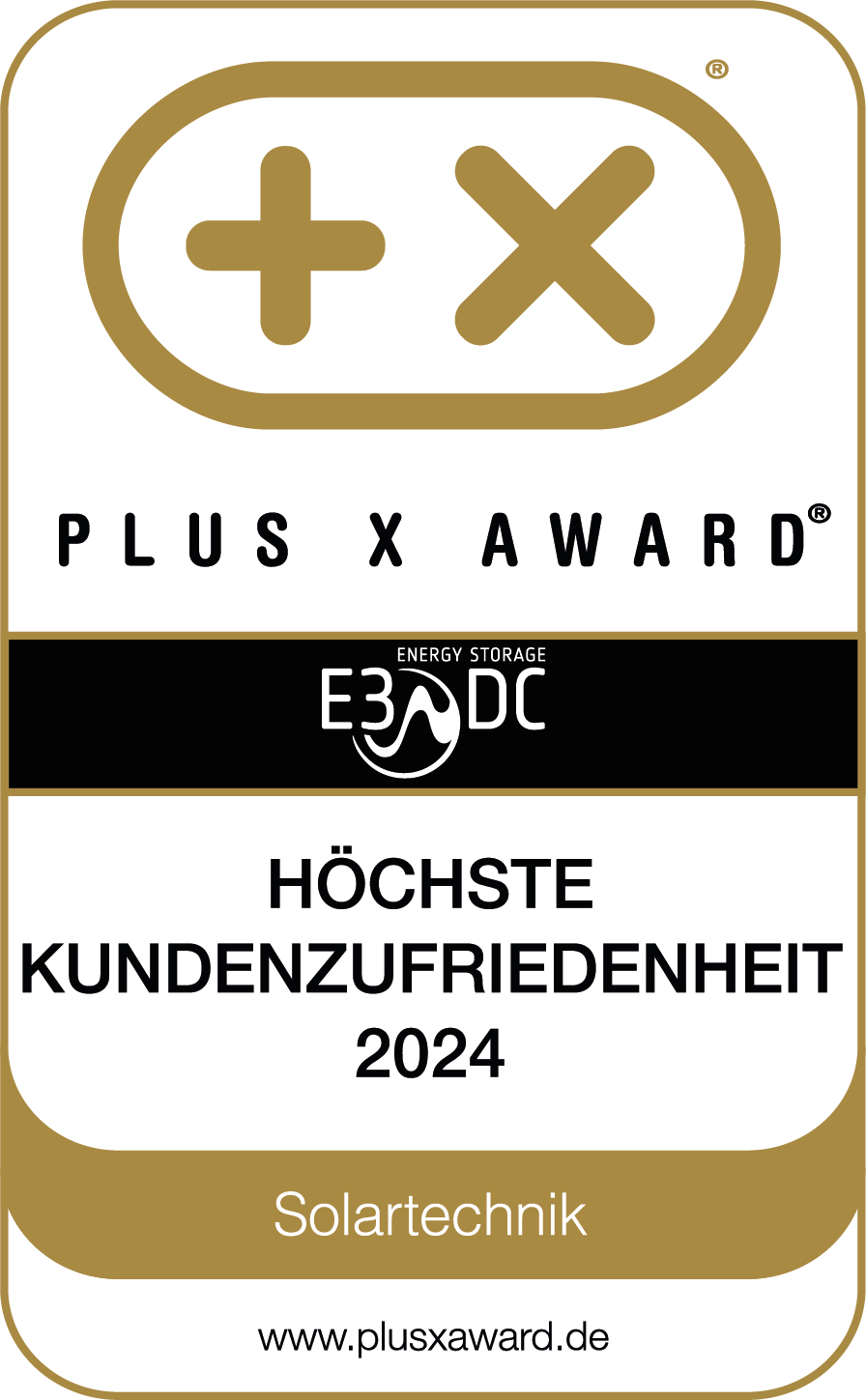
Electricity costs more than halved
Electricity costs more than halved
The Quattroporte system from E3/DC increases the independence in a garage
- A 26 kWh storage system supplies electricity for the paint shop‘s system technology
- Around 60 % of the enterprise‘s electricity is supplied by PV and the storage sytem
Facts at a glance
- Object: Commercial building (car paint shop), year of construction: 1996
- Location: Neukirchen vorm Wald, Bavaria, Germany
- PV system: roof-mounted system, 38.2 kWp
- Storage system: E3/DC Quattroporte DUE, 26 kWh
- Energy requirement: approx. 50,000 kWh per year
- Degree of independence: 60 %
The car repair and paint shop Schotte in Neukirchen vorm Wald (Bavaria, Germany) covers the greater part of its not exactly small power requirement with solar power. Solar-Pur AG has installed a Quattroporte storage system from E3/DC to ensure that its own energy is available regardless of the weather.
The energy transition has long since also reached commercial enterprises: And so owner Albert Schotte has been thinking for some time about generating his own energy. In the early years of photovoltaics, it was not yet possible to finance a PV system for workshop operation, but in the meantime the calculation has clearly paid off: Schotte wanted to use photovoltaics to reduce his very high energy costs and make himself independent of future price developments. His electricity requirements are high because the painting and drying systems or the fans of the extraction and filter system run at full speed during operation.
Because there are no compromises whatsoever with regard to quality and health protection in the paint shop‘s complex system technology, the electricity requirement is set. So it‘s time to tighten the cost screw. The right instrument for this is solar power: in its own generation with a commercial roof system, it costs only about half as much as electricity from the grid in Germany. The decision for a 38.2 kW PV system was therefore made quickly, Schotte emphasizes: „We pay up to 1,400 € per month for electricity, and we said to ourselves: We want to save at least half of that.“
Before installing his PV system in the summer of 2018, the master craftsman received a tip that he should include a power storage unit so that he could also work with his own energy in the morning or when the sky is cloudy. This decision was also easy after consultation with Solar-Pur AG: the choice fell on the new Quattroporte system from E3/DC. This AC-coupled and modular solution is particularly suitable for supplementing existing systems and for high capacities in the commercial sector. Karl-Heinz Simmet, CEO of Solar-Pur, also sees great opportunities for this system in older plants when their operators no longer receive any feed-in-renumeration after 20 years, but want to use the electricity in a decentralised and economically sensible way.
Quick installation of the modular system
In the case of the Schotte’s garage, the Solar-PUR team installed a Quattroporte DUE with a capacity of 26 kWh. The installation took only about one and a half hours, the connection of the system to the PV system is very simple via „Plug & Play“. A special feature of the Quattroporte is its modular expandability, which is not limited in time, because one or two additional DUE devices can be added and combined to form a system with up to 78 kWh. Far higher capacities are possible in farming operations. E3/DC offers an inexpensive storage solution that is precisely tailored to customer requirements, especially for commercial applications.
But in which situations does the storage make sense if the demand is essentially during the day? On the one hand, the company cannot always use the generated power directly, for example when preparing a paint job. On the other hand, even in Bavaria, the sun does not shine without a break. The flexible storage system achieves what is not possible with a pure PV system: minimizing both grid feed-in and – more importantly – the amount of electricity drawn from the grid. The energy storage absorbs energy in sunny hours, releases it again in cloudy times or in the dark and brings self-sufficiency to the best possible value.
30,000 kWh from own source
According to the annual forecast, Albert Schotte achieves 60 % self-sufficiency: he uses 30,000 of the 37,000 kWh from his PV system himself, which cover three fifths of his total requirements (50,000 kWh). Because he no longer has to purchase this quantity, the entire system pays for itself after around nine years. Financing was no problem with these prospects, and Schotte found the decision easy: „I need the energy, so I have to spend the money anyway. And once I hand over the system, the junior is happy!
What self-sufficiency looks like on individual days or over a month, what surpluses are fed into the grid and what still has to be drawn from the grid: Albert Schotte can trace all this at any time via the E3/DC energy portal. To the question, why not go more trade enterprises into the economically and ecologically meaningful self power supply, Schotte answers: „Perhaps many see the energy as fixed costs and do not think further about it.“ A mistake, as can easily be seen in Neukirchen vorm Wald.
